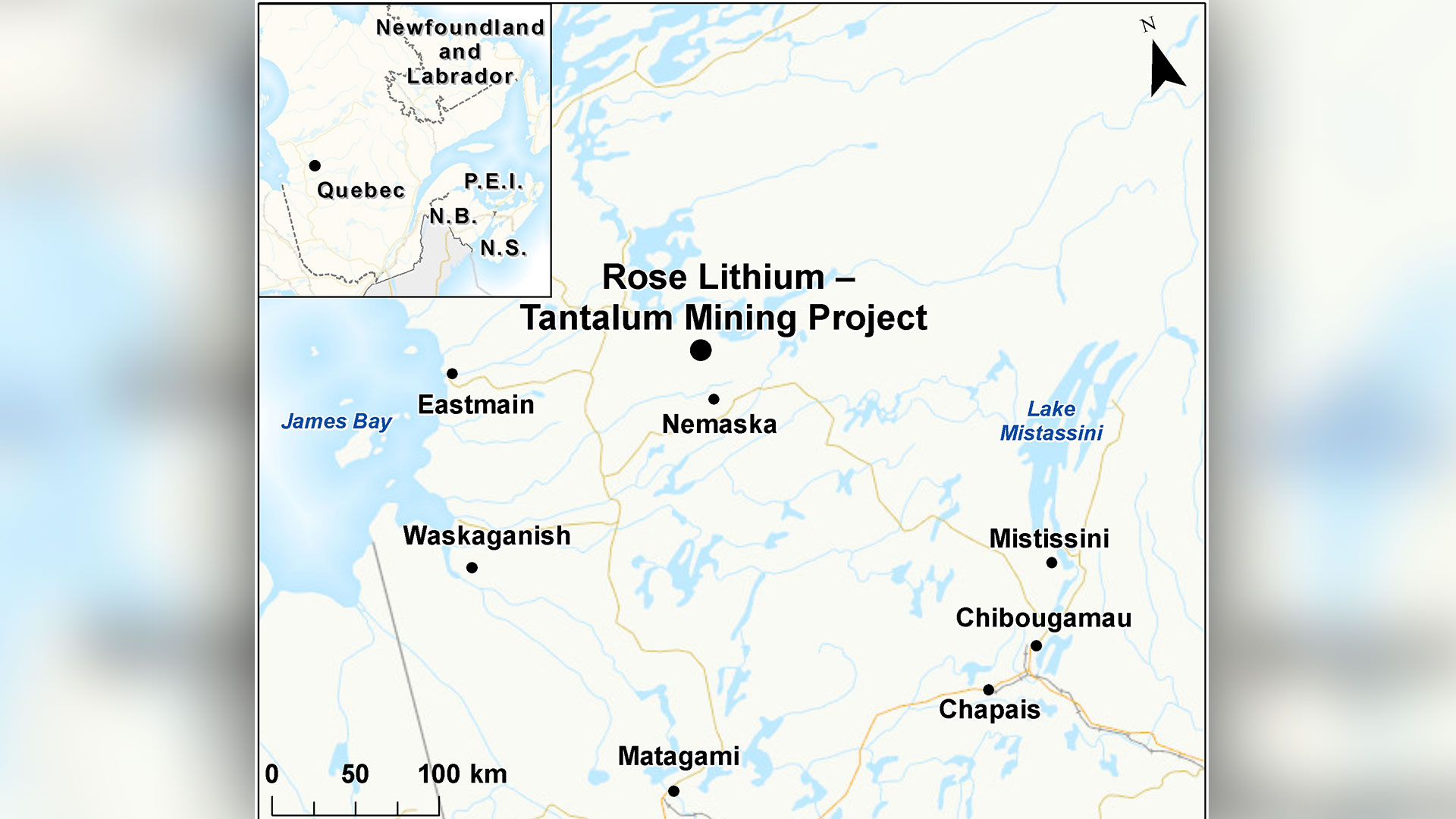It’s been a little more than a year since the Grande Alliance deal was reached between the Cree Nation and Quebec government.
The agreement promises to bring job opportunities to a large part of the James Bay Cree population.
But as mining projects begin to take root on their territory, community members are wondering whether this economic development is worth it.
Ernie Moses, a trapper from Eastmain, Que., a Cree community on the James Bay coast about 1,200 km north of Montreal, has just learned that he won’t be able to hunt moose on this part of his territory for 30 years because of a proposed mining project.
“It’s like I’m selling the details of the territory but it’s not me who decides [what happens]. It’s you [who decides],” he said in Cree during a virtual consultation held by Impact Canada – an environmental assessment agency.
An open pit mining project is set to break ground on the territory occupied by Moses and his ancestors before him.
The Rose Lithium Tantale mining project is currently being studied by both the provincial and federal governments.
According to the federal government’s website, “the project includes the operation of an open pit, waste and tailings impoundment area, an industrial ore processing facility and the option of transforming concentrate off-site.
“The mine would produce about 4,500 tonnes of ore per day over a 17-year life span. The project would last 26 years in total with the construction and restoration phases.”
The mine will be located about 40 km north of Nemaska.
Nemaska, along with the Cree communities of Eastmain, Waskaganish and Waswanipi were consulted virtually in April.
Pakesso Mukash was the Cree translator during the consultations.
He questions their legitimacy explaining that the Cree Nation was busy preparing for their annual goose break hunt at the time.
“If we do a virtual thing attended by 10 people – can we really say we’ve consulted the whole nation? That was one of the questions,” he said.
Mukash said some Cree are upset by the prospect of mining development and are dissatisfied by the Grande Alliance agreement with Quebec.
Signed in 2020, the $4.7 billion Grande Alliance agreement is meant to improve mining infrastructure on Cree territory, known as Eeyou Istchee to the Cree.
It’s currently in the first phase of a feasibility study.
“The things I’ve heard have really upset me,” said Mukash. “Trappers say they’re losing hope, they’ve said outright, ‘no one is listening to us. No one represents us. We’re being mistreated, so we should let it go.’”
Jean-Paul Murdoch, negotiator for the Cree Nation Government, said each project will give the population the chance to get involved to express concerns.
“It’s certain we have to look at our entire toolbox when it comes to protecting the environment,” he said. “There are government laws and rules we use – there are even laws and rules at the federal level. It’s for these reasons the project is going through evaluation processes at both the federal and provincial level.”
Murdoch said public consultations with the province are over – but community members can still submit online letters with their concerns and objections.
Impact Canada will submit its report in a few months.
How much time trapper Ernie Moses has left to enjoy his ancestral hunt grounds is unclear.










